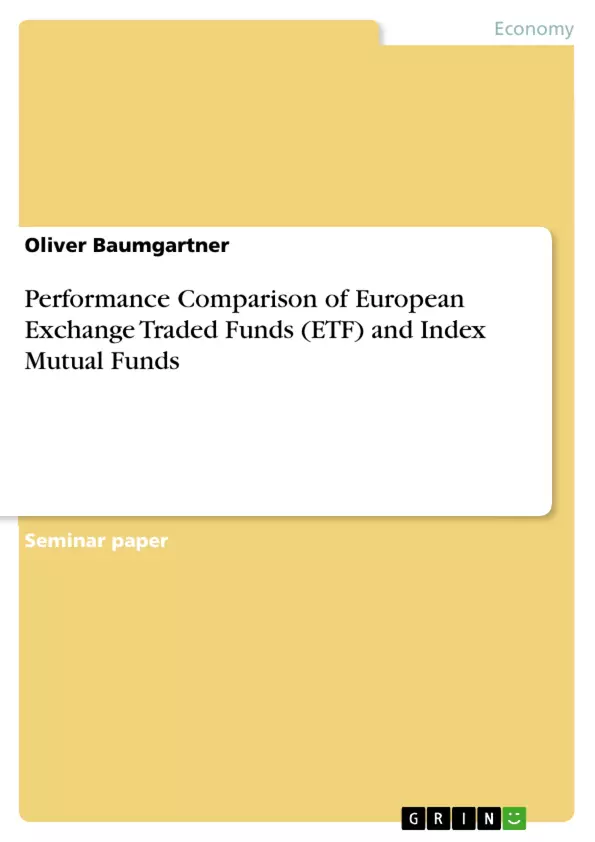Nowadays exchange traded funds (ETFs) are getting more and more popular. Many investors believe that their risk-performance profile is better than ordinary index mutual funds. This seminar paper focuses on the real returns of both asset classes. It is based on a scientific paper written by Sharifzadeh et. al.(2012). The authors compared ETFs and index mutual funds which had quite the same composition. Additionally, they tested the risk-return profile of both, using the sharpe ratio. Interestingly, they found out that ETFs could not outperform index mutual funds and vice versa.
Inhaltsverzeichnis (Table of Contents)
- Introduction
- Differences between ETFs and Index Mutual Funds
- Methodology
- Result
- Results for Hypothesis 1
- Results for Hypothesis 2
- Conclusion
Zielsetzung und Themenschwerpunkte (Objectives and Key Themes)
This seminar paper aims to compare the performance of exchange-traded funds (ETFs) with index mutual funds. The paper focuses on the question of whether ETFs outperform similar index mutual funds, a question of significant interest to retail investors and fund managers. The paper examines the different structures and trading possibilities of ETFs and index mutual funds, highlighting the creation-redemption process of ETFs and their recent growth in the financial markets.
- Performance comparison of ETFs and index mutual funds
- Differences in trading possibilities and structures
- Creation-redemption process of ETFs
- Recent growth of ETFs in the financial markets
- Impact of ETFs on retail investors and fund managers
Zusammenfassung der Kapitel (Chapter Summaries)
- Introduction: This chapter introduces the research question concerning the performance comparison of ETFs and index mutual funds. It highlights the importance of this question for investors and fund managers and provides a brief overview of existing research on the topic.
- Differences between ETFs and Index Mutual Funds: This chapter elaborates on the structural differences between ETFs and index mutual funds. It discusses the unique trading possibilities of ETFs, including their intraday trading capability and the creation-redemption process.
- Methodology: This chapter details the research methodology used in the paper. It focuses on the research methodology adopted from Sharifzadeh et.al. (2012), which compares the performance of ETFs and index mutual funds over an eight-year period.
Schlüsselwörter (Keywords)
The main keywords and focus topics of this seminar paper include ETFs, index mutual funds, performance comparison, trading possibilities, creation-redemption process, growth of ETFs, retail investors, fund managers, and financial markets.
- Arbeit zitieren
- BSc Oliver Baumgartner (Autor:in), 2013, Performance Comparison of European Exchange Traded Funds (ETF) and Index Mutual Funds, München, GRIN Verlag, https://www.grin.com/document/211829



